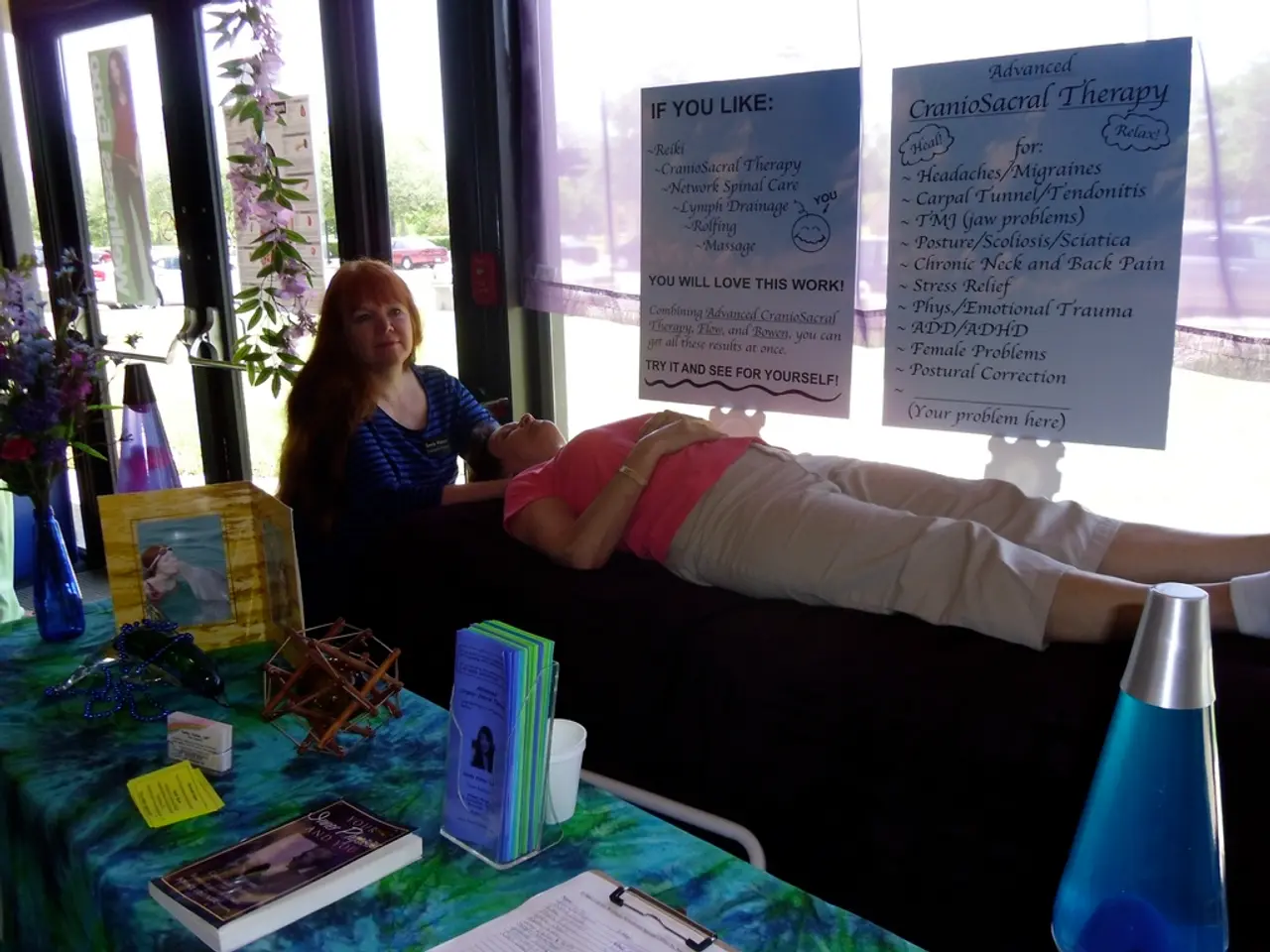MDMA's Potential in Alleviating Post-Traumatic Stress Disorder
In the realm of mental health, a novel approach is gaining traction: MDMA-assisted therapy. This treatment, which involves the use of MDMA (ecstasy or molly), is being explored as a potential short-term solution for managing post-traumatic stress disorder (PTSD).
Payton Nyquvest, founder and CEO of Numinus, posits that MDMA-assisted therapy could aid in re-processing trauma by helping the brain process fear. This, in turn, could allow fearful memories of traumatic events to be "re-written." According to Nyquvest, this therapy might also help release other emotions associated with PTSD, such as grief and shame.
The psychotherapeutic approach in MDMA-assisted therapy is called "inner-directed therapy," where mental health professionals are specially trained to create an environment that supports the inner healing process of the person receiving the therapy.
In the United States, the Food and Drug Administration (FDA) has shown interest in rescheduling MDMA by 2023, making it available for therapy, but not for legal recreational use. However, FDA advisors recently expressed significant reservations against approving MDMA for PTSD treatment as of August 2024.
If you haven't found relief from traditional treatment methods, you may want to consider MDMA-assisted therapy as an alternative, if possible. It's important to note that this therapy isn't recommended for people who are pregnant or nursing, have certain physical health conditions, or certain mental health conditions.
A study found that 67% of participants with PTSD who received MDMA-assisted therapy no longer met the diagnostic criteria for PTSD after 2 months of therapy, compared to 33% of folks in the placebo group.
MDMA therapy typically begins with a medical and psychological screening, followed by two to three 90-minute preparatory sessions before beginning the therapy. The therapy itself is carried out by two therapists over two to three sessions in a supportive environment, each session lasting 8 hours total and separated by 2 to 4 weeks.
However, it's crucial to be aware of the potential side effects of MDMA therapy. These can include reduced or lack of appetite, sleep disturbances, hyperthermia, increased blood pressure, tachycardia, nystagmus, mydriasis, panic attacks, anxiety, confusion, nausea, vomiting, muscle tension, tremors, shaking, sweating, blurred vision, teeth grinding, jaw tightness and clenching, moderate potential for addiction or problematic use in non-medical settings, dizziness, dry mouth, thirst, difficulty concentrating, restlessness, feeling cold, restless leg syndrome, and more.
Before taking MDMA for PTSD, it's a good idea to consider speaking with a doctor or mental health professional who's PAP-trained to help you determine if this treatment option is right for you. Your therapist will likely conduct at least one 90-minute integration session following each MDMA-assisted session, with a closing integration session after your last MDMA session.
It's important to note that MDMA-assisted therapy is an interdisciplinary treatment involving both medical and mental health clinicians. For more information, you can check out resources and organizations such as MAPS, Johns Hopkins University, and the U.S. National Library of Medicine.
While MDMA-assisted therapy isn't legal throughout the United States, it may be available through mental health treatment centers, clinical trials, or psychedelic-assisted psychotherapy (PAP) trained therapists. As research continues, we may see this promising approach becoming more widely available in the future.
Read also:
- Nightly sweat episodes linked to GERD: Crucial insights explained
- Antitussives: List of Examples, Functions, Adverse Reactions, and Additional Details
- Asthma Diagnosis: Exploring FeNO Tests and Related Treatments
- Unfortunate Financial Disarray for a Family from California After an Expensive Emergency Room Visit with Their Burned Infant








